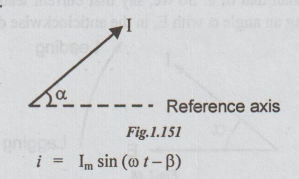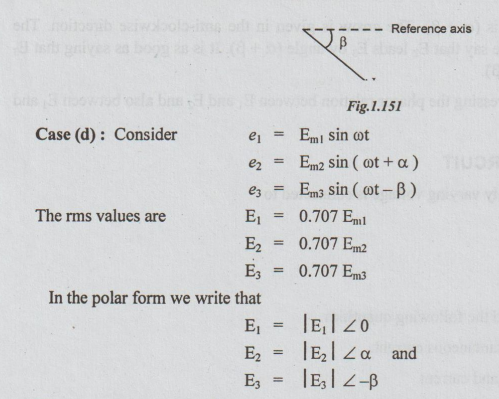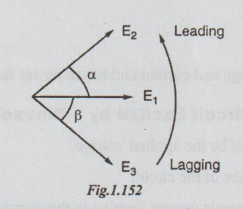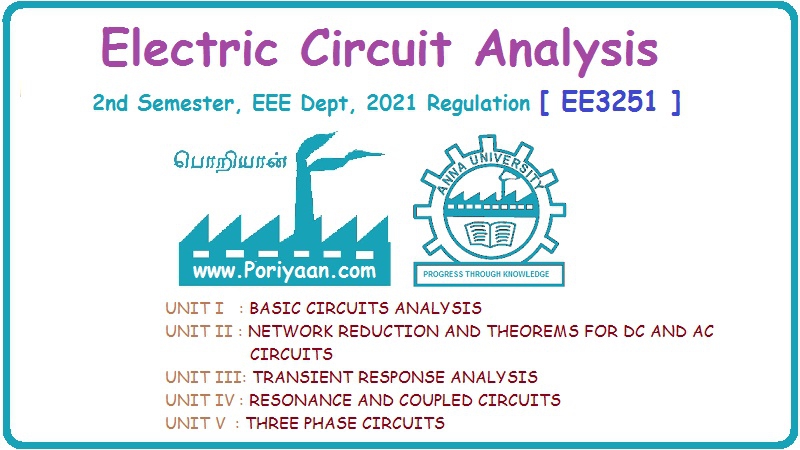Electric Circuit Analysis: Unit I: b. Basic circuits analysis
Representation of sinusoidal quantities in polar form- drawing the phasors
Basic circuits analysis
ωt is taken as reference angle (zero angle). In the polar form, any quantity is shown in the following way.
REPRESENTATION OF SINUSOIDAL QUANTITIES IN POLAR FORM- DRAWING
THE PHASORS
Case
(a): Consider I = Im sin ωt
Its
maximum value = Im
Its
effective value (RMS value) = | I | = Im/√2 = 0.707 Im
ωt
is taken as reference angle (zero angle). In the polar form, any quantity is
shown in the following way.
The
phasor (vector) = | Magnitude| ∠
angle with reference to reference.
Here,
I = | I | ∠ 0
This
phasor is shown along positive x-axis as below.

Case
(b):
Consider i = Im sin (ωt + ɑ)
In
the polar form, I = |I| ∠
ɑ
This
phasor makes an angle a with reference (positive x-axis) in the anti-clockwise
direction (above positive x-axis).
This
is illustrated as below.

Case
(c): Consider
In
the polar form, we write
I
= | I | ∠ - β
This
phasor is shown below reference axis by angle β.

The
above equations can be shown as phasors as shown hereunder

Taking
E, as reference, we can say that E2 leads E1 by ɑ and
E3
lags behind E1 by β.
-
angle indicates lagging and + angle indicates leading.
Suppose
that we want to explain the phase relation between E2 and E3, it is done as
explained below.
The
angle between E2 and E2 is (ɑ + β). The arrow is given in
the anti-clockwise direction. The arrow side quantity is E2. Hence
we say that E2 leads E3 by angle (ɑ + β). It is as good as saying
that E3 lags behind E2 by same angle (ɑ + β).
This
arrow can be used for expressing the phasor relation between E1 and
E2 and also between E1 and E3
Taking
E1 as reference, we can say that E2 leads E1 by ɑ and
E3
lags behind E1 by β .
-
angle indicates lagging and + angle indicates leading.
Suppose
that we want to explain the phase relation between E2 and E3,
it is done as explained below.
The
angle between E2 and E3 is (ɑ + β ). The arrow is given
in the anti-clockwise direction. The arrow side quantity is E2. Hence
we say that E2 leads E3 by angle (ɑ + β). It is as good as
saying that E3 lags behind E2 by same angle (ɑ + β).
This
arrow can be used for expressing the phasor relation between E, and E2 and also
between E1 and E3.
Electric Circuit Analysis: Unit I: b. Basic circuits analysis : Tag: : Basic circuits analysis - Representation of sinusoidal quantities in polar form- drawing the phasors
Related Topics
Related Subjects
Electric Circuit Analysis
EE3251 2nd Semester 2021 Regulation | 2nd Semester EEE Dept 2021 Regulation
